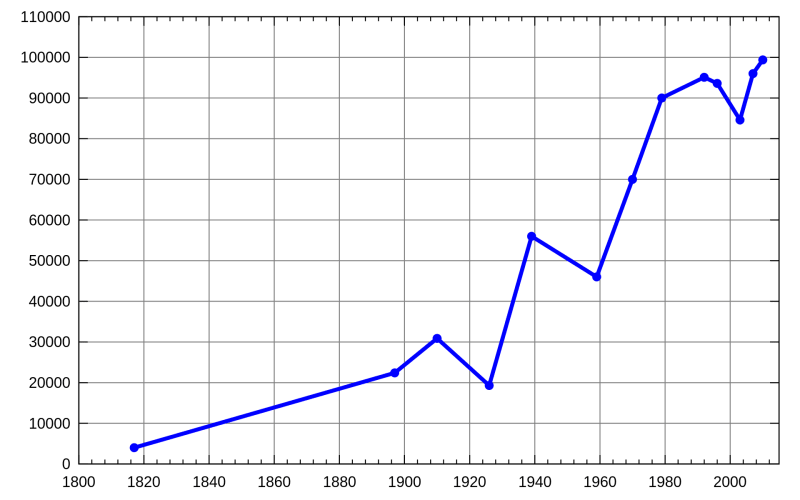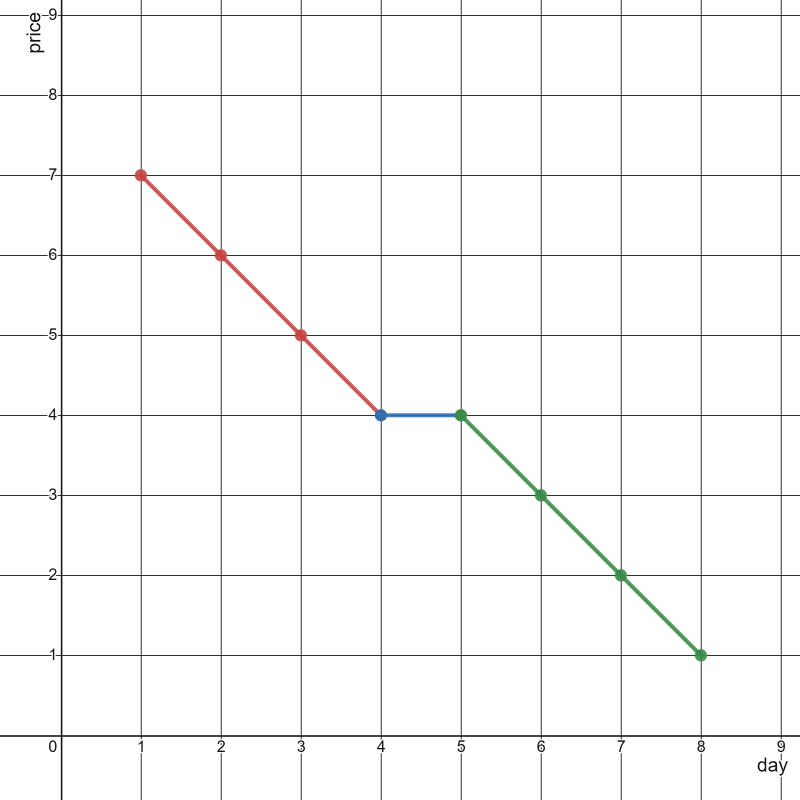You are given a 2D integer array stockPrices where stockPrices[i] = [dayi, pricei] indicates the price of the stock on day dayi is pricei. A line chart is created from the array by plotting the points on an XY plane with the X-axis representing the day and the Y-axis representing the price and connecting adjacent points. One such example is shown below:
Return the minimum number of lines needed to represent the line chart.
Example 1:
Input: stockPrices = [[1,7],[2,6],[3,5],[4,4],[5,4],[6,3],[7,2],[8,1]]
Output: 3
Explanation:
The diagram above represents the input, with the X-axis representing the day and Y-axis representing the price.
The following 3 lines can be drawn to represent the line chart:
- Line 1 (in red) from (1,7) to (4,4) passing through (1,7), (2,6), (3,5), and (4,4).
- Line 2 (in blue) from (4,4) to (5,4).
- Line 3 (in green) from (5,4) to (8,1) passing through (5,4), (6,3), (7,2), and (8,1). It can be shown that it is not possible to represent the line chart using less than 3 lines.
Example 2:
Input: stockPrices = [[3,4],[1,2],[7,8],[2,3]]
Output: 1
Explanation:
As shown in the diagram above, the line chart can be represented with a single line.
Constraints:
-
1 <= stockPrices.length <= 105 -
stockPrices[i].length == 2 -
1 <= dayi, pricei <= 109 - All
dayiare distinct.
SOLUTION:
class Solution:
def minimumLines(self, stockPrices: List[List[int]]) -> int:
stockPrices.sort()
stack = []
for x, y in stockPrices:
if len(stack) < 2:
stack.append((x, y))
else:
ppx, ppy = stack[-2]
px, py = stack[-1]
if (py - ppy) * (x - px) == (px - ppx) * (y - py):
stack.pop()
stack.append((x, y))
return len(stack) - 1





Top comments (0)